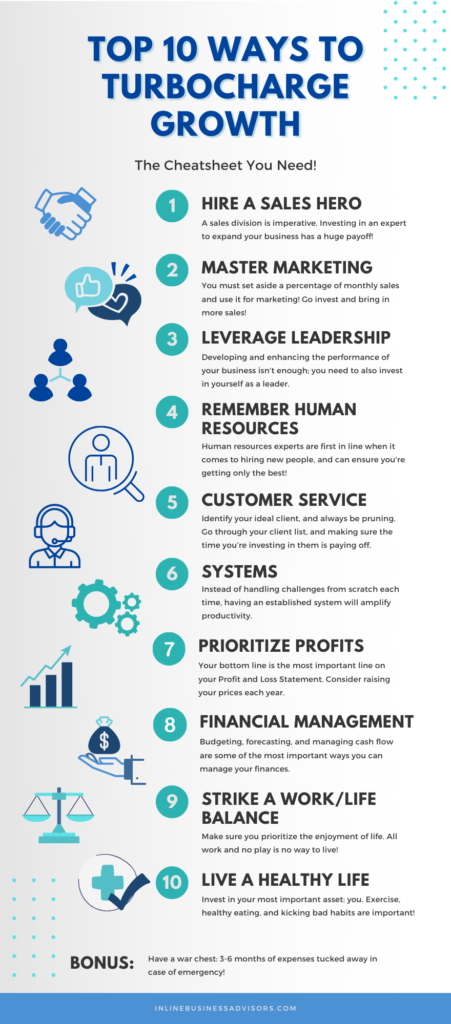Blog

Musings from the coach
Marketing plays a pivotal role in the success of any business, and having a well-planned marketing budget is essential for financial adeptness and strategic growth. In this comprehensive guide, we will delve into the intricacies of creating a marketing budget that not only helps you allocate resources efficiently but also ensures a significant return on investment. By the end of this article, you will gain the knowledge and tools needed to navigate the dynamic world of marketing budgeting.
What Is a Marketing Budget?
Before delving deeper into “How to budget for marketing, let’s understand what a marketing budget is. To put it simply, a marketing budget is a structured financial plan that outlines all the expenses associated with your marketing efforts. It serves as a central repository for tracking and managing the financial aspects of your marketing campaigns. This budget encompasses various expenditures, including paid advertising, sponsored web content, additional marketing staff, domain registration, website development, print and billboard advertising, TV ads, and more.
How to Plan Your Marketing Budget?
Creating a marketing budget is an essential part of planning your marketing campaign. With the funds, your efforts will stay strong. However, crafting a marketing budget requires attention to unique factors defining your business and its specific objectives. Embarking on creating a marketing budget requires understanding key steps for your upcoming campaigns.
This multifaceted process necessitates a deep dive into the unique aspects of your business, market, and objectives. By doing so, you ensure that your marketing budget aligns perfectly with your goals and resources. In the following sections, we will delve into these steps, so you have the insights needed to craft a well-rounded marketing budget.
1. Set Marketing Goals and Objectives
Marketing is a pivotal driver for building a sales funnel and generating direct sales, ultimately boosting gross revenue. Create an effective marketing budget by strategically planning for short and long-term goals, aligning with your company’s vision.
Setting specific and well-defined goals for each marketing campaign is of paramount importance. Tailor these goals to fit your business’s unique characteristics, including its size, industry, and long-term vision. By delineating precisely what you aim to achieve, you not only provide a sense of direction for your marketing efforts but also establish a robust framework for measuring success. Whether your objectives revolve around heightening brand awareness, driving an influx of website traffic, or turbocharging sales figures, the clarity of your goals plays a pivotal role in allocating your marketing budget. It ensures your financial resources are channeled strategically to achieve your desired outcomes, whether they are short-term or long-term in nature.
2. Conduct Market Research
Market research is crucial for constructing a successful marketing budget. It involves exploring your target audience, market trends, and industry dynamics, providing insights for strategic allocation and effective campaigns.
One essential tool in the market research arsenal is the creation of buyer personas. These are fictional but highly detailed representations of your ideal customers. While you may have multiple buyer personas, it is crucial to cast the net only a little. We recommend that you have at most five personas to ensure focused targeting.
When crafting your buyer personas, precision is key, and data should be your guiding light. Here are some effective methods to gather the data needed for developing robust buyer personas:
Survey Your Current Customers: Existing customers provide valuable insights into your target audience’s characteristics and preferences. Conduct surveys to gather their input and experiences.
Interview Potential Customers: Reach out to individuals you believe belong to your target audience. Engage in one-on-one interviews to gain a deeper understanding of their needs and desires.
Leverage Google Analytics: Analyze data from Google Analytics to determine the demographics of your website visitors. This information can be instrumental in shaping your buyer personas.
Utilize Facebook Insights: Explore user interactions with your brand on social media through Facebook Insights. This data can offer crucial insights into the preferences and behavior of your potential customers.
Craft detailed buyer personas to inform precise budget allocation, resonating with and converting your audience for successful marketing campaigns.
3. Identify Competitors
Understand competitors thoroughly to plan marketing campaigns and allocate budgets effectively, gaining insights into their strategies and performance.
Begin by identifying brands within your industry that are performing exceptionally well. Examine their marketing strategies, dissect their advertising tactics, and scrutinize the channels they leverage to reach their target audience. By doing so, you can uncover the approaches that have propelled them to success and potentially emulate or adapt them to suit your objectives.
Analyzing the budget allocations of successful marketing campaigns and their respective departments can provide crucial benchmarks. It enables you to gauge the financial resources required to remain competitive within your industry and achieve your marketing goals effectively.
Furthermore, assessing your competitors’ marketing efforts allows you to identify gaps and opportunities in your strategy. You can fine-tune your budget to capitalize on areas where competitors may fall short or explore innovative approaches to gain a competitive edge. Remember that industry type can significantly influence your marketing spend, so understanding the unique dynamics of your sector is essential for accurate budget planning.

4. Developing the Marketing Campaign
Selecting the concept to convey your message about your product or service is a critical determinant in shaping your marketing budget. This concept should seamlessly align with your company’s overarching strategic vision. Once these pivotal decisions are made, the associated costs become evident. These costs encompass various elements, such as ad materials, graphic design, art or photography, and other creative components essential for successfully executing your marketing campaign. Careful consideration and alignment of your chosen concept with your company’s strategy ensure that your budget is allocated appropriately, facilitating the creation of impactful marketing campaigns that resonate with your target audience and drive desired results.
5. Decide Marketing Channels
Effective marketing hinges on strategically selecting the right channels to connect with your target audience. Conducting thorough research is imperative to ascertain which channels are most effective in reaching and engaging your specific audience. Different segments of your audience may respond more favorably to particular channels, such as social media, email marketing, content marketing, or other customized platforms. By gaining a deep understanding of your audience’s preferences, you can allocate your budget strategically to the channels that promise the best results.
Marketing channels can be categorized into four primary groups:
Digital Marketing: This category encompasses an array of online channels, including social media marketing, online content marketing, automated or manual email marketing, online advertising through pay-per-click ads or social media ads (paid media), and search engine optimization.
Inbound Marketing: Some inbound marketing channels overlap with digital marketing, including SEO, business blogs, videos hosted on platforms like YouTube and Vimeo, e-books, and other elements that contribute to your content strategy.
Outbound Marketing: Combining outbound marketing with inbound efforts can be beneficial, as tracking outbound marketing can be challenging. Notable examples of outbound marketing include email marketing, TV and radio advertisements, direct mail marketing, press releases, participation in trade shows, and promotional products.
Brand Awareness Campaigns: These campaigns often intertwine with other channels and may include social media marketing and advertising, content marketing, public relations initiatives, and video marketing and advertising.
6. Assess the Marketing Costs
While your marketing budget serves as a roadmap for expected expenditures, the accuracy of your estimates is paramount. Adhering to your budget once it is approved is critical for financial stability and effective planning. Various techniques can assist in estimating marketing costs, ensuring that your budget aligns with your objectives and resources. These techniques include:
Revenue-Based: Reviewing your annual revenue and allocating a percentage for marketing, typically ranging between 6.5% and 8.5%. Newer businesses might allocate a higher percentage, around 10% to 12%, for marketing efforts.
Competition-Matched: Benchmarking your budget against competitors’ spending in your industry ensures you remain competitive.
Top-Down: Management determines a fixed budget figure for marketing, and the marketing department operates within these parameters, providing a predetermined budget without detailed calculations.
Goal-Driven: Aligning your budget with specific marketing goals, for instance, assigning a monetary value to achieving a set number of social media followers or online conversions. This approach ensures that your budget is directly linked to desired outcomes.
7. Develop a Marketing Budget
Constructing your marketing budget is a pivotal step that entails assembling the resources and costs identified during the budgeting process. These resources and costs must be seamlessly integrated with your broader marketing plan. This alignment guarantees that your teams have access to the necessary tools and finances precisely when required. Your marketing budget serves as an integral component of your overall marketing strategy. As your strategies evolve and adapt to changing market dynamics, your budget evolves in tandem, ensuring that it remains a dynamic and responsive tool in your pursuit of marketing success.
8. Allocation in Marketing Budget
Marketing budget allocation serves as a pivotal component in the process of creating a well-structured marketing budget. This allocation represents the maximum limit that can be spent on a marketing plan, encompassing a wide range of expenses aimed at reaching the target audience and achieving key performance indicators (KPIs) that drive a return on investment (ROI) for the company.
The marketing budget allocation is a crucial figure that ensures financial prudence and prevents overspending. Without a clear allocation, there is a risk of exceeding the budget and straining the company’s financial resources.
This allocation plays a central role in estimating both revenues and expenditures over a defined period. It serves as a guide for management when planning and determining how to allocate resources optimally to achieve the best possible results. Importantly, the financial limit set by the marketing budget allocation cannot be exceeded, providing financial discipline and accountability.
Typically, marketing budgets are developed annually, although some businesses may plan quarterly for greater flexibility. During this budgetary period, revenue projections are used to estimate the resources required to achieve marketing objectives. The budget allocation is then further divided into departments and program units, facilitating the identification of necessary resources for each aspect of the marketing strategy.

Mistakes to Avoid in Planning Your Marketing Budget
In the complex world of marketing budgeting, there are several common mistakes that businesses should avoid:
Wrong Resource Allocation: Failing to allocate resources effectively can lead to wasted budgets and missed opportunities. Ensure that you allocate resources based on the specific needs of each campaign and align them with your overall marketing strategy.
Dependence on Incorrect Data: Relying on accurate or updated data can result in better budget decisions. Always conduct thorough research and base your budget on up-to-date market information.
Not Including Present Customers: Do not forget about your existing customer base. Marketing efforts should focus on more than just acquiring new customers. Allocate a portion of your budget to engage and retain your current customers. Depending on the Previous Year’s Budget: Market conditions and business goals can change yearly. Relying solely on the previous year’s budget without reassessment can lead to inefficiencies and missed opportunities.

Final thoughts
A well-planned marketing budget is an indispensable tool for any growing business. It allows you to allocate your resources wisely, track expenses effectively, and achieve your marketing goals efficiently. By following the steps outlined in this guide and avoiding common budgeting mistakes, you can position your business for success in the dynamic marketing world. Remember that a carefully crafted marketing budget not only saves you time and money but also empowers your business to thrive in the competitive marketplace.

Larry Vivola is a successful business coach who coaches entrepreneurs anywhere in the world via Zoom. If he’s not coaching he’s making meatballs and entertaining friends and family!
Free Advice Sucks! Invest in a one-time strategy session and pick Larry’s brain to help solve a pressing problem, discuss an idea, or brainstorm how to give your business performance a Turbo Boost!!! In the end your investment will yield you more money, time, and happiness!
Kim and Mark are two business rivals with side-by-side stalls in a bustling marketplace. Kim always has a line buzzing with chatter, deals being made, and hands exchanging money. Mark’s is often overlooked. Despite his best efforts and rehearsing the same old pitch, he doesn’t understand why his sales strategies consistently fail to attract more leads. Unfortunately, his challenges are not unique in today’s unpredictable, high-octane business world.
It’s no longer enough to set up shop and hope for the best. To truly thrive, to be the stall everyone’s drawn to, you need more than just a product or service. You need sales strategies that attract more leads to supercharge your business growth. Join us as we unveil ten game-changing strategies to boost your business growth.
1. Understand Your Target Audience
Many businesses are content dipping their toes in the shallows, making assumptions based on fleeting interactions and surface-level observations. But true success? It lies in the depths.
Diving deep into your customer’s psyche means immersing yourself in their world. It’s not about what they buy; it’s about why they buy it.
What stories do they tell themselves before making a purchase?
What unspoken needs drive their decisions? Maybe it’s the young professional looking for a suit, not just for its fabric, but for the confidence it promises on a job interview. Or perhaps it’s the parent purchasing a toy, seeing not just a plaything but a tool for bonding with their child.
These are the emotions, the aspirations, the silent fears, and the roaring desires influencing customer choices. By understanding these narratives, you’re not just pushing a product—you’re offering a solution, a dream, or even a moment of solace. You’re connecting on a profound, emotional level, transforming transactions into meaningful relationships.
2. The Magic of Personalization
Every customer is different, each with their own preferences and needs. In today’s competitive market, generic messages often get lost in the noise. But when businesses tune into what makes each customer unique, they can create experiences that truly resonate.
Take the genius of Spotify, for instance. Instead of giving everyone the same playlists, they create personalized song lists based on individual tastes. It’s like having a DJ who knows exactly what you want to hear.
Think about how you can do the same for your customers. Pay attention to their habits, preferences, and feedback, and offer tailored solutions or products. This isn’t just a marketing tactic; when people feel understood and valued, they’re more likely to stick around.
3. Leverage Social Proof
People trust what others say about you more than what you say about yourself. That’s the essence of social proof. It’s about showing potential customers that others have benefited from your product or service.
- Testimonials: Ask satisfied customers for quotes about their experiences. A few words of genuine praise can be more convincing than any sales pitch. Use this in your content to attract more leads.
- Case Studies: Showcase specific examples of how your product or service helped others. A detailed story can paint a vivid picture of the value you offer.
- Reviews: Encourage customers to leave reviews on your website or other platforms. Whether glowing or constructive, they show transparency and can build trust.
- User-Generated Content: Share photos or stories customers have posted about your product. This not only acts as proof of satisfaction but also promotes a sense of community around your brand.

4. Incentivize Referrals
Happy customers can be the best promoters for your business. To attract more leads, encourage them to spread the word and reward them for it. Here’s how:
- Loyalty Discounts: Offer discounts or special deals to customers referring friends or family.
- Bonus Products/Services: Provide a free product or service add-on for every successful referral.
- Exclusive Access: Reward referrers with early access to new products, events, or sales.
- Point System: Introduce a points-based system where referrals earn points that can be redeemed for products or discounts.
- Social Shoutouts: Feature and thank top referrers on your social media platforms, giving them a moment of fame.
When customers see the benefits of referring others, they won’t just be passive consumers but actively champion your brand.
5. Craft Connections via Content Creation
Content isn’t just about filling space or ticking off an SEO checklist. It’s a powerful tool to educate, entertain, inspire, and connect. A solid content strategy can boost your visibility and create genuine connections with your audience. There are several ways to attract more leads with this strategy:
- Educational Blog Posts: Share your expertise. Help solve common problems your audience faces. When you provide value, you position yourself as a trusted expert.
- Engaging Videos: Visual storytelling can captivate an audience. Whether it’s a behind-the-scenes look, tutorials, or customer stories, videos can create a more personal connection.
- Infographics: Simplify complex information. Infographics are visually appealing and can make data or processes easier to understand, making them shareable and valuable.
- Interactive Content: Quizzes, polls, and interactive articles can engage users and keep them on your site longer while providing insights into their preferences and needs.
- Consistent Social Media Presence: Regularly sharing updates, stories, and interacting with your followers can foster a sense of community and loyalty around your brand.
Keep in mind that content isn’t just about selling; it’s about sharing a story, building relationships, and establishing trust. Quality over quantity is key. Ensure each piece of content aligns with your brand and adds genuine value to your audience.
6. Embrace Tech in Sales
In the modern era, technology isn’t just a convenience; it’s a game-changer. Those who embrace it not only streamline their operations but also tap into new, expansive markets, enhancing their reach and resonance. But what does it really mean to embrace tech to attract more leads?
- CRM Systems: Customer Relationship Management tools allow businesses to track client interactions, forecast sales, and personalize customer touchpoints.
- AI and Chatbots: By now, we’ve seen Artificial Intelligence isn’t confined to sci-fi. Today, chatbots can engage with customers 24/7 on websites, answering queries, guiding product choices, and enhancing user experience without human intervention.
- E-commerce Platforms: Physical storefronts have their charm, but an online store breaks geographical barriers. With the right platform and digital marketing strategy, businesses can cater to a global audience.
- Augmented Reality (AR) and Virtual Reality (VR): These aren’t just for gamers. Retailers can use AR to let customers “try before they buy” virtually, while VR can offer immersive experiences, from property tours to virtual travel.
- Mobile Optimization: The world is mobile. Ensuring your website, store, and digital touchpoints are mobile-friendly isn’t optional. It’s essential for reaching customers on the devices they use most.
- Analytics and Data Insights: Tech tools can provide detailed insights into customer behavior, preferences, and trends. Leveraging this data can help businesses anticipate needs and refine their strategies.
Approach the digital realm with clarity and purpose. Blindly adopting every tech trend can be overwhelming and ineffective. Instead, focus on technologies aligning with your business goals, enhance your customer’s experience, and offer tangible value.

7. Active Social Media Engagement
Today’s social media platforms are bustling hubs of interaction and commerce. Much like the busy marketplace of old, they are spaces where brands and consumers come together to transact and connect. Here’s how to stand out and build lasting relationships:
- Responsive Customer Service: Social media is a two-way street. Listen to comments, respond to messages, and address concerns promptly. Quick and helpful interactions can turn potential crises into trust-building moments.
- Consistent Branding: To attract more leads, ensure your brand voice and visuals are consistent across all platforms. Consistency breeds familiarity, and familiarity can lead to trust.
- Collaborations and Partnerships: Team up with influencers or complementary brands for joint campaigns or features. It’s a way to tap into new audiences and add value for your existing followers.
- Utilize Stories and Live Features: Go beyond standard posts. Use stories on platforms like Instagram and Facebook for limited-time content, and go live to interact with your audience in real-time.
- Analytics: Use platform-specific insights to understand your audience’s behavior and preferences. Refine your strategy based on what works and what doesn’t.
8. Host Webinars and Live Sessions
Why just tell when you can show and engage? Transform passive viewers into active participants. Let them feel your brand’s pulse, sense its heartbeat. Knowledge isn’t power; sharing it is.
- Interactive Learning: Webinars are not just lectures; they’re interactive platforms. They allow for Q&A sessions, live polls, and real-time feedback, creating a dynamic learning environment where viewers can actively participate and seek clarifications.
- Building Authority: Hosting webinars on topics related to your industry positions your brand as an expert. When you share insights, latest trends, and actionable advice, you’re not just disseminating information but building trust.
- Wider Reach: With the right promotional strategy, webinars can attract more leads and a global audience. They remove geographical barriers, allowing individuals from different locations to connect and collaborate.
- Instant Feedback: Live sessions immediately gauge audience interest and understanding. Real-time questions and reactions can offer insights into what resonates, allowing for on-the-spot adjustments and improvements.
- Deepening Connection: There’s something uniquely engaging about live sessions. They humanize your brand, giving it a face and voice. When viewers can see and interact with you directly, they connect more deeply with your brand’s ethos and values.
Essentially, webinars and live sessions are more than content delivery tools. They are bridges, narrowing the gap between brands and their audience. It’s about turning passive content consumption into an active dialogue, fostering a deeper understanding and connection.

9. Retargeting and Remarketing Campaigns
It’s all too easy for potential customers to get distracted or sidetracked. They might visit your website, look at a product, and then move on, their intent momentarily forgotten. But what if you could remind them, gently nudging them back toward that unfinished action? That’s the magic of retargeting.
- Stay Top of Mind: Retargeting keeps your brand in the viewer’s consciousness. By displaying ads to users who’ve previously visited your site or engaged with your content, you increase their chances of returning to complete a purchase.
- Higher Conversion Rates: Those exposed to retargeting ads are often more likely to convert. They’ve already shown interest; the retargeting ad is a gentle push toward finalizing that interest into action.
- Personalized Ad Experience: With the data gathered from previous interactions, retargeted ads can be tailored to individual preferences, making them more relevant and appealing.
- Cost-Effective: Rather than casting a wide net, retargeting focuses on individuals who have already displayed interest. This often results in a better ROI, as you’re targeting a more receptive audience.
- Re-engage Abandoned Carts: One primary use of retargeting is to target users who added items to their shopping cart but didn’t check out. A timely reminder can prompt them to revisit and complete their purchase.
Retargeting is like the gentle strumming of a familiar tune, subtly guiding users to where they once found value. It ensures your brand doesn’t get lost in the vast cacophony of online content, helping you rekindle interest and reignite potential sales opportunities.
10. Building and Nurturing an Email List
While some argue that the age of email is declining with the rise of instant messaging and social media, the numbers tell a different story. With billions of active email users worldwide, email remains a vital business communication channel. The challenge, then, is not the medium itself but how it’s used. Here’s how to restore the charm of emails:
- Segmentation Is Key: Not every email is suitable for every subscriber. Segment your email list based on demographics, purchase history, or interaction levels to ensure the content is tailored to the recipient.
- Personal Touch: Generic emails are easy to ignore. Addressing the recipient by their name, referencing past interactions, or offering personalized recommendations can make your email stand out.
- Value-Packed Content: Every email should provide value, whether an exclusive discount, an insightful article, or a special announcement. If the recipient consistently finds value in your emails, they’re more likely to engage with them.
- Interactive Elements: Modern email platforms allow for more than just text and images. Polls, surveys, and clickable elements can make emails more interactive and engaging.
- Optimized Design: With many users checking their emails on mobile devices, ensuring your emails are mobile-responsive and visually appealing across all devices is crucial.
- Clear Call-to-Action (CTA): Every email should have a purpose, which should be clear to the recipient. Whether it’s to read a blog post, check out a new product, or leave a review, make sure your CTA is compelling and easy to find.
Conclusion
Adopting effective sales strategies is no longer a luxury but a necessity if you want to attract more leads. As the business landscape shifts, so should your approach. Stay innovative, stay ahead!

Larry Vivola is a successful business coach who coaches entrepreneurs anywhere in the world via Zoom. If he’s not coaching he’s making meatballs and entertaining friends and family!
Free Advice Sucks! Invest in a one-time strategy session and pick Larry’s brain to help solve a pressing problem, discuss an idea, or brainstorm how to give your business performance a Turbo Boost!!! In the end your investment will yield you more money, time, and happiness!
When your company starts generating profits it’s an indication that your hard work and dedication are paying off. What should you do with those earnings to ensure long term growth and success? The answer lies in making investments. In this article we will delve into ten strategies to invest your company’s profits to propel it towards growth. Whether you’re a startup or an established corporation, these approaches will help you maximize your earnings and secure a bright future.
1. Investing in Your Team
Indeed, the valuable asset of your company isn’t merely its products or services. Rather, it’s the individuals who make up your team. Consequently, to ensure the growth of your company, it is crucial to invest in the skills, well-being, and development of your employees. By doing so, you’ll see how allocating a portion of your profits towards your team can yield significant returns.
Training and Development
Continuous learning is essential for professional growth. Implementing training programs can enhance the skills of your employees while keeping them updated on industry trends and best practices. This investment not only makes your team more capable; it also demonstrates your commitment to their personal advancement.
Employee Benefits
Certainly, when a workforce is satisfied and content, they are more inclined to remain loyal to your company and consistently deliver their best effort. Consequently, one effective method to enhance employee satisfaction and bolster retention rates is by investing in attractive employee benefit packages.
For instance, comprehensive healthcare coverage can alleviate the stress of medical expenses, leading to healthier and happier employees more focused on their work. This sense of security and well-being translates into increased productivity and dedication to your company’s growth.
Hiring Top Talent
Your company’s success depends on the caliber of individuals you bring on board. Investing in hiring top talent, even if it requires offering competitive salaries, can profoundly impact your company’s innovation and productivity. Brilliant employees help infuse fresh perspectives and expertise into your organization, driving innovation and growth.
Employee Recognition and Rewards
A motivated team often translates to a productive team. Therefore, by implementing employee recognition and rewards programs, you can not only boost morale but also incentivize outstanding performance. In doing so, this investment in acknowledging your team’s hard work and dedication paves the way for cultivating a culture of excellence within your organization.
2. Invest in Customer Experience Enhancement
A satisfied customer is more likely to become a loyal one and recommend your products or services to others. Here’s how investing your company’s profits to customer experience improvement can have a profound impact on your growth:
Customer Support and Service
Enhance your customer support team’s capabilities to provide timely and effective customer assistance. Invest in modern communication channels such as chat support, social media interactions, and phone support to meet customers on their preferred platforms. Additionally, aim for swift issue resolution to minimize customer frustration and downtime.
User-Friendly Interfaces
Invest in user interface (UI) and user experience (UX) improvements to make your products or services more intuitive and enjoyable to use. This investment includes:
- Usability Testing: Conduct usability testing to identify pain points and areas where your product or service can be made more user-friendly.
- Design Enhancements: Collaborate with UX designers to refine the design of your website, mobile app, or software to create a seamless and visually appealing experience.
- Accessibility Features: Ensure your digital platforms are accessible to individuals with disabilities to reach a broader audience.
Feedback and Surveys
Continuous improvement relies on valuable insights from your customers. Invest in collecting feedback through surveys, reviews, and direct interactions to understand their preferences, pain points, and expectations. Analyze customer feedback data to identify recurring themes and areas for improvement. Use the insights gained from feedback to make actionable changes and enhancements to your products, services, or processes.

3. Invest in Business Development
Business development initiatives are crucial for expanding your company’s reach and market presence. Some areas you can invest your company’s profits include:
Market Research
Stay ahead of competitors by continually researching your target market and identifying new opportunities. Some investments to help with that:
- Competitive Analysis: Keeping a keen eye on your competitors’ strategies, strengths, and weaknesses can provide invaluable insights that shape your own strategies.
- Consumer Behavior Studies: Understanding your customers’ behavior, preferences, and pain points helps you tailor your products or services to better meet their needs.
- Trend Analysis: Anticipating industry trends and technological advancements allows you to position your company as a forward-thinker ready to embrace change and innovation.
Partnerships and Alliances
Form strategic partnerships with other businesses to expand your product/service offerings. By combining your strengths, you can offer a comprehensive solution to your customers, creating a win-win situation that drives growth for both companies involved. Consider:
- Joint Ventures: Partnering with another company to develop and market a new product or service can open doors to untapped markets and shared expertise.
- Supplier Relationships: Establishing strong relationships with reliable suppliers can save costs and secure access to essential resources.
- Distribution Partnerships: Collaborating with distributors or retailers can help your products reach a broader audience.
4. Invest Profits in Innovation and Product Enhancement
Innovation is the key to staying competitive in today’s fast-paced business world. Invest a portion of your company’s profits in:
Research and Development
Invest in research and development (R&D) initiatives to create or improve new products. This includes:
- Prototyping and Testing: Develop prototypes and conduct rigorous testing to ensure new products meet quality and performance standards.
- Innovation Teams: Assemble cross-functional teams dedicated to exploring new ideas and driving innovation within your organization.
- Quality Improvement: Enhance the quality of your products or services to exceed customer expectations.
Data-Driven Insights
Leverage data analytics to gain valuable insights into customer behavior, market dynamics, and operational efficiency. This investment includes:
- Big Data Analytics: Utilize advanced analytics tools to process large datasets and extract actionable insights.
- Predictive Analytics: Forecast future trends and customer behavior to proactively make informed decisions and develop strategies.
- Data-Driven Decision-Making: Embed a data-driven culture within your company to inform product development, marketing strategies, and operational improvements.
5. Invest in Supply Chain Optimization
Allocating profits to supply chain optimization to streamline operations and meet customer demands better. Here are key areas to focus on:
- Inventory Management: Implement advanced inventory management systems and demand forecasting to ensure you maintain optimal stock levels. This prevents overstocking or understocking, reducing carrying costs and increasing customer satisfaction.
- Logistics and Distribution: Invest in logistics and distribution technology to streamline the movement of goods, reduce shipping times, and minimize costs.
- Lean Practices: Implement lean manufacturing and operational practices to eliminate waste, reduce lead times, and enhance productivity.
- Risk Management: Allocate resources to develop a robust risk management strategy to mitigate supply chain disruptions, such as natural disasters or geopolitical events.
6. Invest in Marketing and Advertising
Investing in sales and marketing efforts is akin to fueling the engine that propels your business forward. While your products or services may be exceptional, they won’t reach their full potential without effective marketing and sales strategies. Consider:
- Digital Marketing: An online presence is essential in today’s digital age. Allocate funds to digital marketing channels such as social media advertising, pay-per-click (PPC) campaigns, and search engine optimization (SEO) to expand your reach and engage a broader audience.
- Content Marketing: Creating valuable, informative, and engaging content can position your brand as an industry authority and attract organic traffic to your website.
- Traditional Advertising: Don’t disregard traditional advertising methods like television, radio, and print advertising if they align with your target audience. These channels can still be effective in reaching certain demographics.
- Local Events and Sponsorships: Participate in or sponsor local events, trade shows, or community initiatives to build brand recognition.
A well-planned marketing strategy can help you increase brand visibility and drive sales, ultimately leading to higher profits.

7. Invest Profits in Technology Upgrades
In today’s tech-driven world, staying updated with the latest technology is crucial for business success. Outdated software and hardware can hinder productivity, expose your business to security vulnerabilities, and impede your ability to adapt to market changes. To ensure your technology remains a strategic asset, consider:
Software and Hardware Upgrades
- Regular Updates: Invest in the latest software updates and hardware upgrades to benefit from improved performance, enhanced features, and security patches. This ensures that your systems are efficient, reliable, and compliant with industry standards.
- Cloud Solutions: Embrace cloud computing to increase scalability and flexibility. Cloud-based solutions reduce the burden of managing physical infrastructure, allowing your business to adapt swiftly to changing demands.
- Mobile Optimization: With the growing reliance on mobile devices, optimizing your software and services for mobile platforms can help you reach a broader audience and improve user experience.
Automation
Automation is a powerful tool for streamlining processes, reducing operational costs, and improving overall efficiency.
- Workflow Automation: Implement workflow automation tools to automate routine tasks, such as data entry, approvals, and notifications. This not only accelerates processes but also reduces the risk of human errors.
- Customer Service Chatbots: Invest in an automated customer relationship management (CRM) system and AI-driven chatbots to provide instant customer support, resolve common queries, and enhance the overall customer experience.
- Inventory Management Systems: Automate inventory tracking and ordering to optimize stock levels and reduce carrying costs.
Cybersecurity
As businesses increasingly rely on digital platforms, protecting sensitive data and maintaining customer trust is paramount. Cybersecurity breaches can have severe consequences, including financial losses and reputational damage. To enhance your company’s cybersecurity measures, consider:
- Firewalls and Intrusion Detection Systems: Invest in robust firewalls and intrusion detection systems to monitor network traffic and block unauthorized access attempts.
- Employee Training: Allocate resources to cybersecurity training programs to educate your team about best practices, recognizing phishing attempts, and safeguarding company data.
- Regular Vulnerability Assessments: Conduct regular vulnerability assessments and penetration testing to identify and address potential weaknesses in your security infrastructure.
8. Invest in Debt Reduction
Debt reduction might not be the first thing that comes to mind when considering how to invest your company’s profits, but it can be a strategic move that sets the stage for more sustainable growth. Reducing debt frees up capital that can be reinvested in your business for growth, so consider:
Loan Repayment
To effectively manage and reduce your debt load:
- Identify High-Interest Debt: Start by identifying and prioritizing the highest interest-bearing loans. These are the ones that cost your company the most.
- Create a Repayment Plan: Develop a comprehensive repayment plan that systematically allocates a portion of your profits to paying off these high-interest loans.
- Refinancing Options: Explore opportunities to refinance existing debt at lower interest rates. Refinancing can lead to substantial interest savings over time.
Credit Management
Effective credit management is another essential aspect of reducing debt and improving your company’s financial health.
- Monitor Your Credit Score: Regularly check your company’s credit score, and take steps to improve it if necessary. A better credit score can lead to more favorable lending terms.
- Negotiate with Creditors: If you have long-standing relationships with creditors, consider negotiating for lower interest rates or extended repayment terms.
- Consolidate Debt: In some cases, consolidating multiple debts into a single, lower-interest loan can simplify debt management and reduce overall interest expenses.
Expansion Fund
A wise approach to debt reduction is to reallocate the funds saved from reduced interest payments to create an expansion fund. This fund can be used to finance growth initiatives such as market expansion, product diversification, and acquisitions.
9. Invest in Real Estate or Property
Investing in real estate or property can provide your company with a stable source of income and asset appreciation. Invest a portion of your company’s profits in:
- Commercial Real Estate: Purchase or lease commercial properties that align with your business needs.
- Income Properties: Invest in rental properties to generate a steady income stream.
Real estate investments can diversify your revenue streams and provide long-term financial security.
10. Invest in Sustainable Practices and Corporate Responsibility
Today’s customers expect businesses to do more than token greenwashing; they expect sustainability to be a corporate value. Invest your company’s profits in sustainability initiatives such as:
- Green Initiatives: Invest in eco-friendly practices such as energy-efficient operations, waste reduction, and recycling programs. These efforts can lead to cost savings and demonstrate your commitment to environmental stewardship.
- Ethical Sourcing: Ensure that your supply chain adheres to ethical sourcing practices, such as fair labor and responsible sourcing of materials. Transparent and ethical supply chains can appeal to socially conscious consumers.
- Transparency and Reporting: Maintain transparency in your sustainability efforts by regularly reporting on your environmental and social impact. This builds trust with customers and investors who value corporate responsibility.

Final Thoughts
In the ever-evolving landscape of business, the decision of how to invest your company’s profits is pivotal. As we’ve explored in this article, there are a myriad of avenues to consider, each with its own set of benefits and potential returns. From investing in the backbone of your company—your team—to enhancing customer experience, optimizing supply chains, and embracing sustainable practices, the choices are vast and varied.
It’s essential to remember that the best investment strategies are those that align with your company’s core values, long-term vision, and current market dynamics. While it’s tempting to chase after the latest trends or quick returns, sustainable growth often comes from a balanced approach that combines immediate needs with future aspirations.
It’s also important to remember that in today’s socially conscious world, investments that reflect ethical considerations and sustainability are not just good for the planet—they’re good for business. They resonate with consumers, employees, and stakeholders, fostering trust and loyalty.
As you contemplate where to channel your company’s profits, consider a holistic approach. Look at both the tangible and intangible returns, and always keep an eye on the bigger picture. With thoughtful planning and strategic investments, your company’s profits can be the catalyst for transformative growth and lasting success.

Larry Vivola is a successful business coach who coaches entrepreneurs anywhere in the world via Zoom. If he’s not coaching he’s making meatballs and entertaining friends and family!
Free Advice Sucks! Invest in a one-time strategy session and pick Larry’s brain to help solve a pressing problem, discuss an idea, or brainstorm how to give your business performance a Turbo Boost!!! In the end your investment will yield you more money, time, and happiness!
Is your customer service leaving profits untapped due to its lackluster and outdated approach? Then it’s time to transform your customer service strategy into a powerhouse that meets customer expectations and drives your business’s profitability. In today’s cutthroat business landscape, customers aren’t satisfied with mere products or services; they demand an experience that resonates.
The truth is that while your products or services may be solid, they might not be remarkably distinct from your competitors. That’s where the significance of customer interaction comes into play. Exceptional customer service can shape your business’s reputation, influence customer acquisition, and ultimately boost profitability. Are you ready to amaze your customers and propel your profits to new heights? Keep reading for 5 ways to revamp your customer service and take your business to the next level.
1. Personalization Is Paramount
Today’s customers aren’t just looking for generic interactions anymore. They want to feel genuinely valued and understood. Think of personalization as an investment in your business’s future. It’s a way to show that you’re not just after quick sales; you’re in it for the long haul. As the digital world continues to change how customers think, personalization is your way of saying, “We get you, and we’re here to make your experience awesome.”
Getting to Know Your Customers
Personalization is more than just using a customer’s name. It’s about truly understanding their preferences, habits, and aspirations. Here are questions you can explore to gain deeper insights into your customers:
- What are their favorite products or services?
- What challenges do they often encounter?
- What initially motivated them to choose our brand?
- Are there specific occasions or events important to them?
- What interests or hobbies do they have that align with our offerings?
Imagine if a store owner remembered your favorite snack. You’d feel pretty special, right? That’s the feeling you can give your customers when you personalize their experience.
Tailoring Solutions
Ever had a waiter recommend a dish just for you? That’s the kind of tailored approach customers love. They want solutions that resonate with their specific issues. Every customer has distinct preferences and challenges, so generic solutions might not cut it. Instead, ask yourself:
- How can we align our products/services with their unique needs?
- Are there additional features or offerings that could enhance their experience?
- What channels of communication do they prefer when seeking assistance?
- Can we create a journey that seamlessly guides them from exploration to purchase?
Some tips to delight them include:
- Segmentation Strategy: Group customers based on shared characteristics or preferences, which enables more personalized communication.
- Customization Options: Provide configurable products or services aligning with individual preferences. Analyze their previous purchases to suggest complementary items or upgrades.
- Journey Mapping: Plot customer interactions to anticipate their needs at different touchpoints.
- Tailored Offers: Provide discounts or promotions for products they’ve shown interest in.
- Problem-Solving Precision: Offer solutions directly addressing their specific challenges.
Saying Thank You in Style
Think about receiving a heartfelt thank-you note from a friend. Now imagine getting one from a company after you’ve made a purchase. It’s a small gesture that goes a long way. Sending personalized thank-you notes shows customers that you appreciate their business and that they’re not just another sale.
Power of the Right Tools
It’s not magic. It’s technology. A Customer Relationship Management (CRM) system is like a superhero personalization sidekick. It keeps track of customer info, so you’re armed with insights when they reach out. This helps your team provide solutions that make sense for each customer.
Creating Lasting Connections
Personalization isn’t just about solving problems but building a real connection. Customers are likelier to stick around when they feel seen and understood. This loyalty can lead to repeat business and even friends telling friends about your fantastic service.

2. Seamless Multi Channel Support
The days of relying on a single customer service hotline are behind us. Modern customers are everywhere. They’re on social media, sending emails, chatting, and calling. To step up your customer service game, you need to embrace what we call “seamless multi channel support”.
Multichannel support isn’t just a trend. It’s the future. As technology evolves, customers will expect to interact with businesses in more than one way. By embracing this approach, you’re not just keeping up but staying ahead of the game.
Catering to Multichannel Preferences
Think of it this way: if your friend prefers texting and you keep calling them, it won’t be a smooth conversation, right? It’s the same with customer service. Your customers have different preferences when it comes to reaching out, and you want to make it easy for them.
Prioritizing Convenience
Imagine a customer trying to get help on social media, then giving up and emailing because they can’t find the answers they need. That’s not a great experience. Offering support across various platforms means customers can choose what’s most convenient for them. It’s like giving them options at a buffet: they can pick what works best.
Integration for Consistency
The magic lies in integration. When a customer reaches out on Facebook, your team should respond as effectively as if they called. Consistency matters. It shows that no matter where your customers go, they’ll get the same helpful service.
Commitment to Availability
When you offer multi-channel support, you’re telling customers, “We’re here for you, no matter what.” It’s a commitment to being available whenever and wherever they need assistance. This kind of dedication builds trust. Customers will remember the company that was there to help, no matter the platform.
Choose Quality Over Quantity
While expanding across all possible channels is enticing, a prudent approach involves strategic selection. Not all channels are equal for every business. Understand your customer demographics and preferences, then tailor your multichannel strategy accordingly. Don’t spread yourself too thin; focus on excelling where your customers are most likely to engage.
3. Empower Your Support Team
Your customer service team is on the front lines, directly engaging with your customers. They’re your business’ superheroes, facing customer questions and concerns head-on. But even superheroes need the right tools and training to save the day. That’s why empowering your support team matters.
Equip Them With Tools and Knowledge
You can’t expect to win a battle if you send your knights in without swords or armor. The principle applies if you want to revamp your customer service. Your support team needs the right tools to effectively assist customers. More than that, they need to know how to correctly use them. Equip your team with in-depth knowledge about your products and services so they can provide accurate information.
Authority to Make Things Right
Imagine a ship captain who needs someone else’s permission to steer. It doesn’t make sense, does it? Empower your support team with the authority to solve problems on the spot. When customers reach out, your team should be able to take action without unnecessary delays. This shows customers that you trust your team to make things right.
Creating Lasting Impressions
Remember how you feel when someone goes above and beyond to help you? That’s the impression you want your support team to leave. In a world where first impressions matter more than ever, your support team holds the key. Empowering them is not just an expense; it’s an investment.
When your team is equipped and confident, they become brand ambassadors. Their interactions don’t just solve problems; they build trust and loyalty. As your team shines, customers remember the outstanding service they received, which can translate into long-term loyalty and, ultimately, increased profits.

4. Proactive Problem Solving
Why wait for customers to come to you with problems? Proactively address potential issues before they escalate if you want to delight your customers with exceptional service. Here’s how you can master the art of proactive problem-solving:
Harness the Power of Data Insights
Data is your ally in the quest for proactive excellence. Utilize advanced analytics tools to sift through customer interactions and identify patterns. By spotting recurring pain points or trends, you gain valuable insights into areas that might need attention. For instance, if multiple customers are struggling with a certain feature on your website, you can anticipate the problem and find a solution before others encounter it.
Predict Customer Needs
Imagine being a step ahead of your customers’ desires. By analyzing past behaviors and preferences, you can predict what they might need next. For instance, if a customer frequently buys hiking gear, sending them a personalized email about a new line of outdoor accessories demonstrates your attentiveness. This showcases your dedication and saves customers the effort of seeking relevant products themselves.
Reach Out Before They Ask
Think of proactive problem-solving as a friendly helping hand extended before someone stumbles. Monitoring customer actions on your platform can alert you to potential issues. For example, if a customer repeatedly attempts to access a specific page unsuccessfully, sending them a quick message offering assistance shows that you’re on top of things. This quick intervention prevents frustration and cultivates a positive perception of your brand.
Tailor Solutions in Advance
Consider proactively offering solutions that align with your customers’ preferences. If you notice a surge in inquiries about a new product launch, draft a comprehensive FAQ or a step-by-step guide in advance. Customers who encounter the information they need without searching for it feel valued and understood, fostering a strong sense of loyalty.
Educate and Empower
Consider proactive problem-solving as a form of education. By addressing potential issues, you’re empowering customers with knowledge that enhances their experience. This could involve providing tips on using a product’s features effectively or guiding them through a complex process. Educated customers are happier customers, and they’re more likely to stick around.

5. Feedback Utilization for Continuous Improvement
Feedback is a goldmine of insights waiting to be tapped. Make the most of it by actively seeking customer feedback and using it to refine your customer service processes.
Active Feedback Collection
The first step in this journey is actively seeking feedback. Think of it as inviting your customers to share their thoughts and feelings about their experience with your business. This can be done through post-interaction surveys, reviews, or even informal conversations. The goal is to open a channel of communication encouraging customers to voice their opinions.
Mining for Insights
Once you’ve collected feedback, it’s time to mine it for insights. Imagine each piece of feedback as a puzzle piece that completes the picture. Whether it’s a complaint, a suggestion, or a compliment, each one holds a nugget of information. Pay close attention to recurring themes, which are the patterns that can guide your improvements.
Constructive Criticism and Positive Spotlight
Imagine you’re baking a cake, and someone points out that it needs more sugar. That’s constructive criticism, which helps you enhance the final product. Similarly, when customers provide feedback on areas needing improvement, they’re helping you refine your offering. On the flip side, positive feedback is like a spotlight on what you’re doing right. It’s a validation of your efforts and a cue to keep those strategies in place.
Action for Evolution
In a world of constant change, feedback is your growth catalyst. It’s a mirror reflecting your strengths and weaknesses. By actively seeking and acting upon feedback, you’re not just polishing your customer service. You’re sculpting it into a masterpiece that resonates with your audience.
Act on the insights you’ve gathered by tweaking processes, addressing pain points, and amplifying strengths. This continuous cycle of action and refinement ensures your customer service is a dynamic force aligned with customer needs.
Final Thoughts
Revamping your customer service strategies isn’t just about enhancing how you interact with customers; it’s about driving profits through enhanced customer satisfaction and loyalty. Personalization, seamless multi-channel support, empowered support teams, proactive solutions, and feedback utilization are the pillars that can transform your customer service from adequate to exceptional.
Incorporating these strategies requires a strategic mindset, commitment, and a willingness to adapt. It’s about understanding that customer service is not just a cost center but a powerful revenue generator. When customers feel valued and supported, they are more likely to become repeat buyers and advocates for your brand. In short, you invest in your business’s long-term success and profitability by revamping your customer service. Take the first step today, and reap the rewards of delighted customers and maximized profits.

Larry Vivola is a successful business coach who coaches entrepreneurs anywhere in the world via Zoom. If he’s not coaching he’s making meatballs and entertaining friends and family!
Free Advice Sucks! Invest in a one-time strategy session and pick Larry’s brain to help solve a pressing problem, discuss an idea, or brainstorm how to give your business performance a Turbo Boost!!! In the end your investment will yield you more money, time, and happiness!
If you’ve been an entrepreneur for any length of time, then you’re familiar with the adrenaline rush when your efforts finally pay off. Whether it’s a sudden influx of interest due to a viral marketing campaign, an unexpected boost from a product endorsement, or a rapid shift in market trends, a surge in customer demand is thrilling. It’s also a double-edged sword. Sure, high demand is fantastic—it means you’re doing something right. But if you’re not prepared to handle it, you’ll end up in the deep end. So how do you meet customer demand when it surges overnight?
Understanding and Adapting to Meet Customer Demand
In truth, understanding and managing customer demand isn’t just about counting heads or tallying sales. It requires digging deeper and tuning into your customers’ needs and wants. You’ve got to dive beneath the surface to tune into their needs and desires, understand what makes them tick, and anticipate their moves. This is a high-stakes game you don’t want to lose. Here’s how you can meet customer demand consistently:
Identifying Customer Needs and Wants
First, you need to determine your customer’s needs and wants. Now, needs are necessities, while wants are desires. Your customers need a solution to a problem they’re facing. They want your product or service to provide that solution in a certain way. Here are some strategies to crack the code:
- Surveys and Feedback Forms: These tools offer direct insights into your customers’ thinking. They’re a goldmine of information, helping you understand what your customers like, what they don’t, and what they wish you offered.
- Social Listening: Keep an ear to the ground on social media and online forums. They are filled with unfiltered customer opinions. Social listening can reveal customers’ pain points, needs, and wants that you might not capture through direct feedback.
- Sales and Customer Service Interactions: Your sales and customer service teams interact with your customers daily. They are your front-line soldiers and can provide valuable insights into customer needs and wants.
The Art of Predicting to Meet Customer Demand
Predicting demand is like gazing into a crystal ball but using data and research instead of magic. Some methods of predicting market demand include:
- Historical Data Analysis: This is your first stop. Look at your sales records, busy periods, and sales slumps. Identifying patterns and trends in your own data is a reliable way to forecast demand.
- Market Research: Understanding your industry’s landscape is crucial. Keeping an eye on your competitors, industry trends, and overall market growth can provide a larger context for your demand predictions.
Customer Surveys and Feedback: Yes, these tools come in handy again! They’ll help you spot trends and understand potential demand for new products or services.
Recognizing the Warning Signs to Meet Customer Demand in Time
Knowing the telltale signs of increasing demand can prepare you for the upcoming surge. Some things you should watch out for include:
- An uptick in Sales: This is the most obvious sign. An increase in sales, especially a sudden or larger-than-expected one, could indicate growing demand.
- More Customer Inquiries: Are you getting more phone calls, emails, or direct messages about your products or services? This could signal that interest—and therefore demand—is rising.
- Increased Web Traffic: Monitor your website and social media analytics. An increase in traffic, page views, or engagement rates usually precedes a surge in demand.
Consider these signs in combination rather than isolation because an increase in customer demand is typically marked by several concurrent indicators.
Ultimately, a decent forecasting model is all about being proactive instead of reactive, but what happens if you fail to meet the surging customer demand?

Why Should You Strive to Meet Customer Demand?
Unmet customer demand can trigger a domino effect of unfortunate events. These can be:
Tarnished Brand Reputation
A potential drawback of having a flood of customers eager to buy your product but you’re out of stock is reputational damage. Or worse, you’ve got the goods, but your overwhelmed team can’t keep up with the orders, resulting in delayed deliveries, irate customers, and a flurry of negative reviews. This doesn’t just disappoint your customers—it can tarnish your brand reputation. A mishandled demand surge can leave customers feeling that you’re unreliable, leading them to take their business elsewhere.
Declining Customer Satisfaction
Customers are never happy when they don’t get what they want when they want it. And unhappy customers? Well, they’re unlikely to be repeat customers. Poor service during high-demand periods can cause long-term damage to your customer relationships and brand loyalty.
Lost Sales and Revenue
This is by far the worst problem caused by unmanaged customer demand. Unhappy customers will turn to your competitors if they can’t get your product or service because you’re out of stock or can’t fulfill orders. And that’s revenue walking out the door. Plus, once a customer has found an alternative, they might not return even when you’re ready to meet demand again.
Operational Inefficiencies
If you’re not prepared for a demand surge, your operations could grind to a halt. Without the right systems, processes, and staff in place, order fulfillment can become chaotic. This, in turn, leads to mistakes, returns, and additional costs, which can significantly strain your resources and lead to operational inefficiencies.
Increased Staff Turnover
In a high-pressure environment, without the right support or resources, employees might start looking for greener pastures. You might see a higher staff turnover if you’re constantly in a state of demand surge chaos. This increases your recruitment and training costs and leads to a loss of valuable skills and experience, further hampering your ability to meet customer demand.
Dilution of Company Culture
A consistently overstretched team might struggle to maintain the values and behaviors that define your company culture. High-stress levels and constant firefighting can lead to declining teamwork, collaboration, and the positive work environment you’ve worked hard to build.

Strategies to Meet Surging Customer Demand
Facing an unexpected spike in customer demand can be overwhelming. Here are 8 tried-and-true strategies to help you meet customer demand more effectively
- Streamline Operations
Ensure efficiency by automating redundant tasks and investing in tech upgrades for improved order processing and inventory management. Prioritize offerings based on profitability, brand alignment, and customer needs.
- Invest in Team
Cross-train staff for versatility and provide necessary resources. Maintain open communication to manage stress and encourage motivation.
- Nail Hiring Strategy
Hire additional manpower considering demand’s nature, duration, and budget. Temporary or part-time hires could manage short-term surges, while long-term increases may necessitate team expansion. Consider outsourcing if suitable.
- Smart Inventory Management
Monitor stock levels, sales data, and supplier lead times closely. Consider increasing safety stock, diversifying suppliers, and investing in inventory management software.
- Build Strong Relationships with Suppliers
Establish strong, diverse supplier relationships to ensure quick turnarounds, better prices, and flexibility.
- Foster Cross-Functional Collaboration
Encourage regular inter-team meetings and use project management tools for effective coordination and transparency. Value each team member’s contribution.
- Stay Customer-Centric
Prioritize customer needs, providing timely, empathetic responses, and personalizing experiences. Use CRM tools for managing interactions, tracking sales, and analyzing behavior. Implement loyalty initiatives for existing customers.
- Preserve Your Core Values
Despite high demand, uphold the values that differentiate your business. Let these values guide every decision, interaction, and management strategy, reinforcing your brand in the long run.

Final Thoughts
The time to act is now. Remember, as thrilling as a sudden surge in customer demand can be, it’s essential to manage it effectively. As discussed above, the key lies in balancing supply and demand, being efficient in your operations, investing in your team, and never losing sight of your core values. With careful planning, strong management, and a customer-centric approach, you can meet increased demand, strengthen your brand, and build lasting customer relationships.
Ready to ride the tide of growth? Start implementing these strategies today to ensure you’re prepared for any increase in demand. And remember, the only constant in business is change, so don’t just adapt, thrive!

Larry Vivola is a successful business coach who coaches entrepreneurs anywhere in the world via Zoom. If he’s not coaching he’s making meatballs and entertaining friends and family!
Free Advice Sucks! Invest in a one-time strategy session and pick Larry’s brain to help solve a pressing problem, discuss an idea, or brainstorm how to give your business performance a Turbo Boost!!! In the end your investment will yield you more money, time, and happiness!





